
The Qajar dynasty was an Iranian dynasty founded by Mohammad Khan of the Qoyunlu clan of the Turkoman Qajar tribe.

Amir-Abbas Hoveyda was an Iranian economist and politician who served as Prime Minister of Iran from 27 January 1965 to 7 August 1977. He was the longest serving prime minister in Iran's history. He also served as Deputy Prime Minister and Minister of Finance in Mansur's cabinet. After the Iranian Revolution, he was tried by the newly established Revolutionary Court for "waging war against God" and spreading corruption on earth (Mofsed-e-filarz) and executed.

Jamshid Amouzegar was an Iranian economist and politician who was prime minister of Iran from 7 August 1977 to 27 August 1978 when he resigned. Prior to that, he served as the minister of interior and minister of finance in the cabinet of Amir-Abbas Hoveida. He was the leader of Rastakhiz Party during his tenure as prime minister of Iran.

The Party of Resurrection of the Iranian Nation, or simply the Rastakhiz Party, was Iran's sole legal political party from 2 March 1975 until 1 November 1978, founded by Mohammad Reza Shah.

Ardeshir Zahedi, GCVO was an Iranian politician and diplomat who served as the country's foreign minister from 1966 to 1971, and its ambassador to the United States and the United Kingdom during the 1960s and 1970s.

Hasan Ali Mansur was an Iranian politician who served as Prime Minister from 1964 to 1965. He served during the White Revolution of the Shah Mohammad Reza Pahlavi and was assassinated by a member of the Fada'iyan-e Islam.
Fereydoon Hoveyda was an Iranian diplomat, writer and thinker. He was the Iranian ambassador to the United Nations from 1971 until 1979.

Mohammad Reza Pahlavi, commonly referred to in the Western world as Mohammad Reza Shah, or just simply The Shah, was the last monarch of Iran. He began ruling the Imperial State of Iran after succeeding his father Reza Shah in 1941 and remained in power until he was overthrown by the 1979 Iranian Revolution, which abolished the country's monarchy and established the Islamic Republic of Iran. In 1967, he took up the title Shahanshah and held several others, including Aryamehr and Bozorg Arteshtaran.

Nasser Yeganeh was an Iranian jurist, politician and statesman. He served as Chief Justice of the Supreme Court, the head of the Iranian judiciary, brought in during Amir-Abbas Hoveyda's tenure.
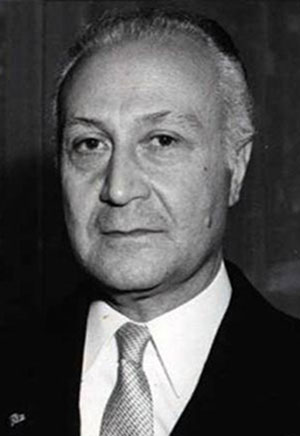
Abbas Ali Khalatbari, also known as Abbas Ali Khal'atbari, was an Iranian diplomat, who served as the minister of foreign affairs from 1971 to 1978. He was among the significant diplomats who shaped the foreign relations of Iran during the reign of Mohammad Reza Pahlavi. He is one of the Shah era politicians who were executed following the Iranian revolution.
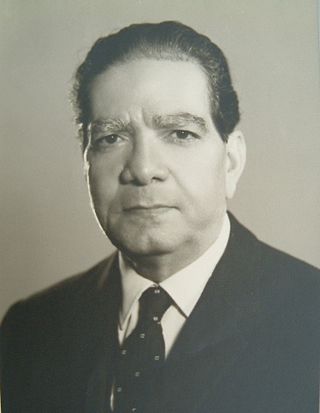
Abbas Aram (1906–1985) was an Iranian diplomat and served as foreign minister for two terms between 1959 and 1960 and between 1962 and 1966. In addition, he was the ambassador of Iran to various countries, including Iraq, the United Kingdom and China.
Reza Azimi was a senior military officer during the reign of the Shah Mohammad Reza Pahlavi. He was a general and held various military and government posts, including commander of the Imperial Iranian Ground Forces and minister of war.
Mansour Rouhani was an Iranian politician who held several government posts during the reign of Shah Mohammad Reza Pahlavi. He was one of the politicians who were murdered after the Islamic revolution in 1979.
Ataollah Khosravani was an Iranian politician. He served as the secretary-general of Iran Novin Party and held several cabinet posts in the 1960s.
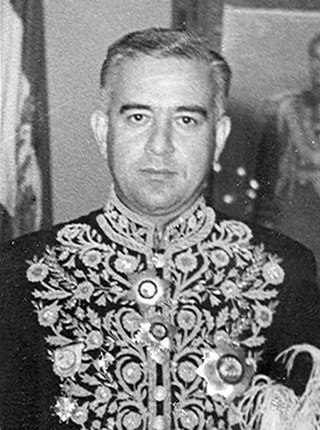
Abdolreza Ansari (1925–2020) was an Iranian engineer, bureaucrat and politician who held various government posts. He served as minister of labor (1959–1960) and minister of interior (1966–1969).
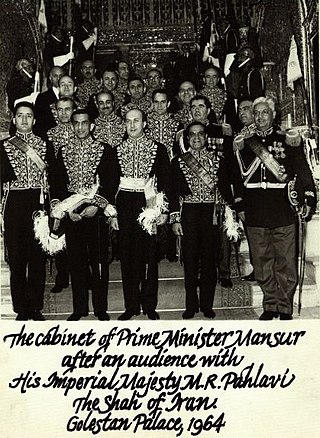
The cabinet led by Prime Minister Hassan Ali Mansur was inaugurated on 7 March 1964. It replaced the second government of Asadollah Alam. Mansur's cabinet was the first of party-governments in Iran. It was led by the Iran Novin Party and was approved by the Majlis on 8 March. It enjoyed nearly full confirmation at the Majlis, including the members of the opposition party, People's Party.
Asadollah Sanii (1904–1998) was the Iranian minister of defense in the 1965 cabinet of prime minister Amir-Abbas Hoveyda.
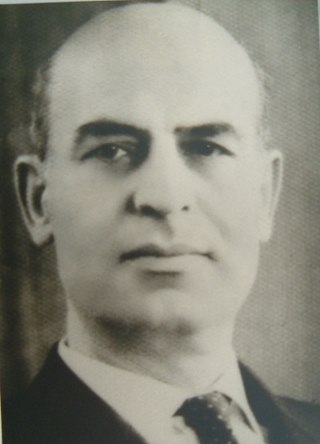
Javad Sadr was an Iranian diplomat and politician who held various public and cabinet posts. He was one of the Iranian ambassadors to Japan. He was the minister of interior and minister of justice in the 1960s.

The sixth Hoveyda government was a cabinet of Iran led by Prime Minister Amir-Abbas Hoveyda that was formed on 27 May 1974 and presented to Shah Mohammad Reza Pahlavi in 29 May. Hoveyda reshuffled in the cabinet on November 8, 1976, replacing all of his ministers. The government was dissolved in August 1977 and replaced by that of new Prime Minister Jamshid Amouzegar.

The cabinet led by Jamshid Amouzegar was announced on 7 August 1977. It succeeded the last cabinet of Amir-Abbas Hoveyda who submitted his resignation on 6 August. Major goal of Amouzegar's cabinet was to implement a new liberal economic program to stop inflation. The cabinet significantly decreased the annual financial aid given to mosques and religious organizations which had very negative effects on the relations between the state and religious establishment.















